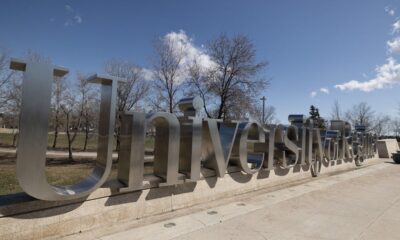Top Stories
New Technique Could Transform Reliability of Child Eyewitnesses

BREAKING: A groundbreaking new technique for police lineups could significantly improve the reliability of child eyewitnesses, according to researchers at the University of Regina. This development comes amid rising concerns about the accuracy of eyewitness testimony, particularly from children, who often mistakenly identify innocent suspects.
New reports reveal that traditional eyewitness identifications can lead to wrongful convictions, with children being particularly vulnerable to errors. In a notorious case from 1990, a six-year-old girl identified Levon Brooks as the kidnapper of her sister, leading to Brooks serving 16 years in prison before being exonerated by DNA evidence. This alarming trend underscores the urgent need for more reliable identification methods.
The research team, led by Shaelyn Carr and Kaila C. Bruer, has developed the Multiple Independent Lineup (MIL) technique, which assesses the likelihood that a child eyewitness has accurately identified a suspect. This method involves showing the child several distinct lineups, each highlighting different features of the suspect, such as face, body, and voice. The more lineups in which a child identifies a suspect, the higher the probability that the suspect is guilty.
In their study involving over 900 children aged six to eleven, the researchers found that if a child identified a suspect in both the face lineup and two additional lineups, there was a staggering 96 percent chance the suspect was guilty. Identifications across three or more lineups increased the certainty to an astonishing 100 percent.
The implications of this research are profound, as it could help reduce wrongful convictions and improve the judicial process. Authorities are now urged to consider implementing the MIL technique in real-life investigations to enhance the accuracy of eyewitness accounts.
As crime dramas like “CSI” glamorize the investigative process, many people have unrealistic expectations of how evidence is gathered and evaluated. This “CSI effect” can amplify the impact of eyewitness testimony, leading jurors to overestimate its reliability. The researchers stress the importance of educating the public about the complexities of eyewitness memory, particularly among children.
The potential of the MIL technique to provide clearer guidance on the reliability of child eyewitness identifications marks a significant advancement in forensic psychology. Further research is necessary to validate its effectiveness fully, but the current findings suggest a promising path forward.
This urgent update highlights the critical need for reform in how law enforcement handles eyewitness identifications, especially given the emotional stakes involved in criminal cases. As the research team pushes forward, the hope is to foster a justice system that prioritizes accuracy over expediency, ultimately protecting the innocent.
Stay tuned for more updates as this story develops.
-

 Politics4 weeks ago
Politics4 weeks agoSecwepemc First Nation Seeks Aboriginal Title Over Kamloops Area
-

 World5 months ago
World5 months agoScientists Unearth Ancient Antarctic Ice to Unlock Climate Secrets
-

 Entertainment5 months ago
Entertainment5 months agoTrump and McCormick to Announce $70 Billion Energy Investments
-

 Science5 months ago
Science5 months agoFour Astronauts Return to Earth After International Space Station Mission
-

 Lifestyle5 months ago
Lifestyle5 months agoTransLink Launches Food Truck Program to Boost Revenue in Vancouver
-

 Technology3 months ago
Technology3 months agoApple Notes Enhances Functionality with Markdown Support in macOS 26
-

 Lifestyle3 months ago
Lifestyle3 months agoManitoba’s Burger Champion Shines Again Amid Dining Innovations
-

 Top Stories2 months ago
Top Stories2 months agoUrgent Update: Fatal Crash on Highway 99 Claims Life of Pitt Meadows Man
-

 Politics4 months ago
Politics4 months agoUkrainian Tennis Star Elina Svitolina Faces Death Threats Online
-

 Sports5 months ago
Sports5 months agoSearch Underway for Missing Hunter Amid Hokkaido Bear Emergency
-

 Politics5 months ago
Politics5 months agoCarney Engages First Nations Leaders at Development Law Summit
-

 Technology5 months ago
Technology5 months agoFrosthaven Launches Early Access on July 31, 2025

















